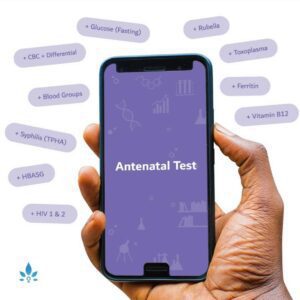What is Congenital Heart Disease?


- Congenital heart disease (CHD) is a general term for a range of birth defects that affect the way the heart works.
- Congenital means a condition present during fetal development or when a baby is born.
- CHD is one of the most common types of birth defects.
- Congenital heart disease is considered a rapidly emerging global problem in child health, with an estimated 1.8 cases per 100 live births globally.
Different types of congenital heart defects
1 – Abnormal connections in the heart or blood vessels, allowing blood to flow where it shouldn’t:
- Atrial or ventricular septal defects. A hole between two of the heart’s upper or lower chambers. This is sometimes described as having a hole in the heart.
- Transposition of the great arteries. Where the pulmonary and aortic arteries, the two main arteries leaving the heart, are swapped, changing the way the blood circulates through the body.
2- Heart valve problems; heart valves don’t open and close properly, meaning blood can’t flow smoothly:
- Coarctation of the aorta. Also called aortic narrowing, where the body’s main large artery, the aorta, is narrower than usual.
- Pulmonary valve stenosis. When a defect narrows the pulmonary valve opening, slowing blood flow. The pulmonary valve controls the flow of blood out of the lower right chamber to the lungs.
- Hypoplastic left heart syndrome (HLHS). Also called an underdeveloped heart, where the left side of the heart, including valves and vessels, doesn’t develop properly. It is difficult for it to pump enough blood around the body and lungs.
What are the risk factors for congenital heart disease?
Caused by abnormal formation of the heart during growth in the womb, there is often no obvious cause of congenital heart disease. That said, some factors are known to increase the risk, including:
- Chromosomal abnormalities
- Family history of congenital heart disease in a first-degree relative
- Genetic syndromes resulting from single gene defects
- Maternal factors occurring during pregnancy, such as: the mother being infected with rubella; taking certain antidepressants; having a seizure disorder requiring antiseizure medications; having types 1 or 2 diabetes; smoking or drinking alcohol; having systemic lupus erythematosus (lupus) or connective tissue diseases.
Signs and symptoms of congenital heart disease in a baby or child
Congenital heart defects are often diagnosed via screening with an ultrasound scan before the baby is born. If a heart defect isn’t identified in the womb, and they aren’t always possible to detect, a serious weakness in the heart will normally be picked up soon after birth.
Symptoms to look for in a baby or child include:
- Rapid heartbeat and breathing
- Swelling of the legs, tummy, or around the eyes
- A blueish or grey tinge to the skin or lips (cyanosis)
- Extreme fatigue
- Tiredness and rapid breathing during feeds, leading to poor weight gain
In some cases, signs of less serious heart defects become more obvious as a child grows. Contact your healthcare provider or midwife if you notice any of the symptoms listed above, or if you notice your child tiring easily or struggling to breathe smoothly during exercise or an activity.
Treatment for congenital heart defects
Certain congenital heart defects, such as a hole in the heart, may not require treatment and will often mend on its own.
In more complex cases, the heart defect is more serious. Corrective surgery or intervention may be required either soon after birth or as soon as the defect is diagnosed. While the outlook is often promising with timely treatment, people with congenital heart diseases will often need long-term monitoring as further problems with heart rhythm or valves can develop over time.
Antenatal blood tests can pick up key pregnancy indicators. Book an at home blood test on Nabta’s shop. Nabta is reshaping women’s healthcare. We support women with their personal health journeys, from everyday wellbeing to the uniquely female experiences of fertility, pregnancy, and menopause.
Get in touch if you have any questions about this article or any aspect of women’s health. We’re here for you.
Sources
Congenital Heart Disease, NHS, https://www.nhs.uk/conditions/congenital-heart-disease/
Factors That May Lead to a Congenital Heart Defect (CHD), Stanford’s Children’s Health, https://www.stanfordchildrens.org/en/topic/default?id=factors-contributing-to-congenital-heart-disease-90-P01788
Congenital heart defects in children, Mayo Clinic, https://www.mayoclinic.org/diseases-conditions/congenital-heart-defects-children/symptoms-causes/syc-20350074
Global, regional, and national burden of congenital heart disease, 1990–2017: a systematic analysis for the Global Burden of Disease Study 2017, The Lancet, March 2020, https://www.thelancet.com/journals/lanchi/article/PIIS2352-4642(19)30402-X/fulltext












































